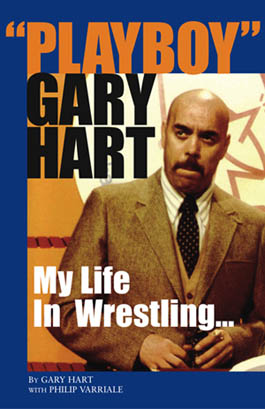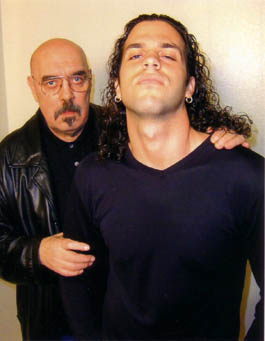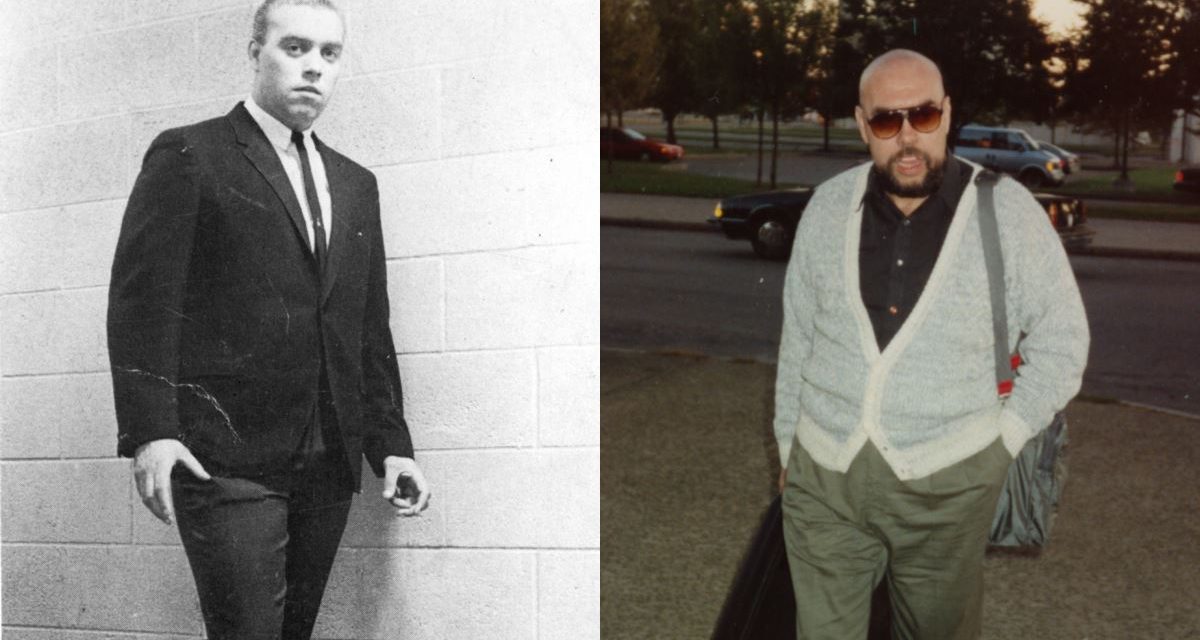“Playboy” Gary Hart was respected by peers as an excellent manager, a great booker, a straight shooter, and a man of his word. Most of all, however, Hart was known for his love and affection for his sons.

Gary Hart’s autobiography, titled “Playboy” Gary Hart: My Life in Wrestling with a Little Help from my Friends, ranks as one of the most informative, in-depth wrestling books ever written. It is a virtual encyclopedia of wrestling information from territories across the world over the course of several decades. True to life, Hart manages to express his undying love for his sons over the course of the book.
While the modern wrestling business requires extensive travel, the wrestling business of the past demanded its performers to constantly travel from town to town each week. After a run of six months or a year, a performer could expect to move to a different territory and repeat a similar travel schedule. Naturally, wrestling was not the most family friendly business around.
Travel, fame, prestige, and money could all tempt wrestlers not to fulfill family obligations. An emotional Ric Flair admitted on his last WWE DVD release that he did not even think about his family while he was on the road. The 1999 documentary Beyond the Mat revealed the dysfunctional relationship between Jake Roberts and his daughter. Unfortunately, the stories about Flair and Roberts could be told about countless other wrestlers throughout the decades.
One of the common excuses given is that to be successful in wrestling, one had to sacrifice family time. Luckily for Chad and Jason Williams, their father did not buy into that philosophy. Throughout the book, Hart gives examples of situations where he made decisions with his family as the first thing in mind. Although heavy travel was required, Hart even denied some opportunities at career advancement for the sake of his family. When he did have to travel, he cherished his off-hours with his family.
When reviewing a man’s life story, it is appropriate to start with his biggest accomplishment and/or priority. With Gary Hart, there was no doubt that it was his family. As Chad explained to SLAM! Wrestling, perhaps it was his father’s lack of a father figure in his own life that motivated him to forge such a special bond with his children. Growing up as a self-described “street kid” in Chicago, Hart originally earned money by working for a mafia member named Sam Casino.
Hart is intentionally light on details of his childhood because he understood that most fans would be interested in his life and career after he started in wrestling. Any reader who has struggled through several opening chapters (or in my case occasionally skip the first third of a book), can appreciate Hart for being empathetic towards his fans. Perhaps it was this same ability to understand a crowd that made him a successful manager and booker.Both wrestling historians and younger fans curious about wrestling’s past have so much insight to gain from the book. Hart traveled through so many territories that it is impractical to list them all in this review. As Hart explains his journey throughout his career, readers learn about the personalities, politics, and controversies that existed. Hart unbelievably also survived two plane crashes and describes them in detail.
After Gary Hart’s death in March 2008, Michael Hayes commented on a radio show that Hart was always very sincere and never said words he did not mean. One of the refreshing aspects of the book is that Hart can be fair and balanced when discussing wrestling personalities. Houston promoter Paul Boesch, for example, is criticized several times for making illogical decisions. Boesch is also acknowledged for his good deeds, such as paying Hart extra as a congratulatory gift after the birth of his sons. On the whole, Hart concludes that he loves Paul Boesch.
Fritz von Erich is another figure with whom Hart had a complicated relationship. On one hand, Fritz gave Hart a very healthy income for many years. On the other hand, Fritz tried to low ball him even though he made Fritz huge money. On one hand, Fritz trusted Hart to produce the groundbreaking television show World Class Championship Wrestling. On the other hand, Fritz did not trust him when he wanted to acknowledge Kerry Von Erich’s amputated foot and make Kerry a hero for the downtrodden.
Much has been made out of the supposed “Von Erich curse,” which stems from the deaths of five of Fritz’s sons. Unlike many critics who blame Fritz directly, Hart has a more nuanced perspective. He acknowledges that Fritz loved his children and wanted them to be successful. Hart also acknowledges that Fritz was in denial about the drug scene that existed in World Class. Even after Hart walks in on Chris Von Erich doing drugs, Fritz explains it away by claiming it was medication. Hart also explains that after Fritz was diagnosed with cancer, he did not put up much of a fight. Hart views this as Fritz losing the will to live because of his sons’ deaths.

Gary and Chad Hart.
A large reason for the interest in Gary Hart stems from his involvement with the Von Erichs and World Class Championship Wrestling. It has been argued that no acts in wrestling have ever been as popular in an area as the Von Erichs were in Dallas. Hart reveals that the Von Erich Boys all called him “Uncle Gary” and that he viewed them as family.There were a number of tragedies in World Class, including the deaths of Gino Hernandez and David, Mike, Chris, and Kerry Von Erich. For most of the deaths, Hart was unable to attend the funerals due to discomfort in funeral atmospheres. Gino Hernandez was like a son to Hart, and Hart continued to struggle with his loss for the rest of his life.
Hart is also honest when it comes to his own frequent use of marijuana. He even wonders at one point in the book why people smoking marijuana were so looked down upon in the American South, while regular alcohol binge drinking was ignored.
One of the things that surprised me about the book was the wide array of wrestling personalities Hart worked with throughout his career. Gary Hart was not limited to the large list of personalities that traveled throughout World Class. The book includes stories about Bill Watts, Dusty Rhodes, Bob Orton Jr., Roddy Piper, Eddie Graham, The Sheik, Ernie Ladd, Mark Lewin, and Kevin Sullivan, just to name a few.
Other items of interest in the book include Gary Hart’s significant role in Fritz Von Erich’s large Texas Stadium shows and the original Starrcade. Fans curious about why Hart never worked for WWE get their questions answered, as Hart reveals his opponents within the company and the actions they took to stop him from being hired. WCW and Hart’s frustrations dealing with the booking committee led by Flair is another discussion point in the book.
The book contains 445 pages of densely-packed writing. It is so rich with content, that the same information could have been spread over three books. Because the book covers so much content and has so many stories about so many personalities, it is impossible to do it justice in a review. All I can say is that wrestling fans should purchase the book. They will have a hard time finding a wrestling autobiography that competes.
Phil Varriale also deserves major credit, as he worked with Gart Hart to write the book. Chad Williams expressed his appreciation for Varriale’s work and the final product. “I love Phil to death and I think the book is great. I’ve read a lot of wrestling books. There are so many stories in this book about so many cool wrestlers like Flair, The Spoiler (Don Jardine), Muta, Kabuki, and Andre the Giant. It talks about so many guys. It tells the truth about a lot of guys. He wanted to capture the moment.”Although he believes the book to be excellent, Chad finds it hard to read, as it hits too close to home. “My dad was my life. I talked to so many people after my dad had his heart attack. It is sad. So many people were not close to their father. It is very hard for me to read.”
One of the reasons Chad finds it hard to read is that the book sounds like his father talking. As someone who has seen several interviews with Gary Hart, I certainly agree with that assessment. Reading the pages, I could hear Gary Hart’s calm voice saying the words.
“Playboy” Gary Hart: My Life in Wrestling with a Little Help from my Friends was a blast to read. If professional wrestling history was a class, this book would be required reading. In addition to the many great stories about wrestlers and events outside the ring, readers learn about the inner-workings of the secret world of wresting from decades past. Simply put, wrestling fans who do not read this book are punishing themselves, as it is a treasure.
MATT JOHNSON is a researcher and historian of World Championship Wrestling. He graduated from Northern Michigan University with a double major in English and Social Studies and can be e-mailed at mattjohnson62@yahoo.com.
TOP PHOTOS: Left, Gary Hart in 1960; right, Gary Hart in 1989 by Terry Dart.
RELATED LINKS
- Oct. 21, 2009: Help from friends and family got Gary Hart’s book to market
- Oct. 28, 2008: Gary Hart Guest Booker DVD a bittersweet masterpiece
- Mar. 17. 2008: Gary Hart: ‘With a little help from my friends’
- Mar. 17, 2008: Manager/booker Gary Hart dies
- May 1, 2001: ‘Playboy’ Gary Hart not so hated

